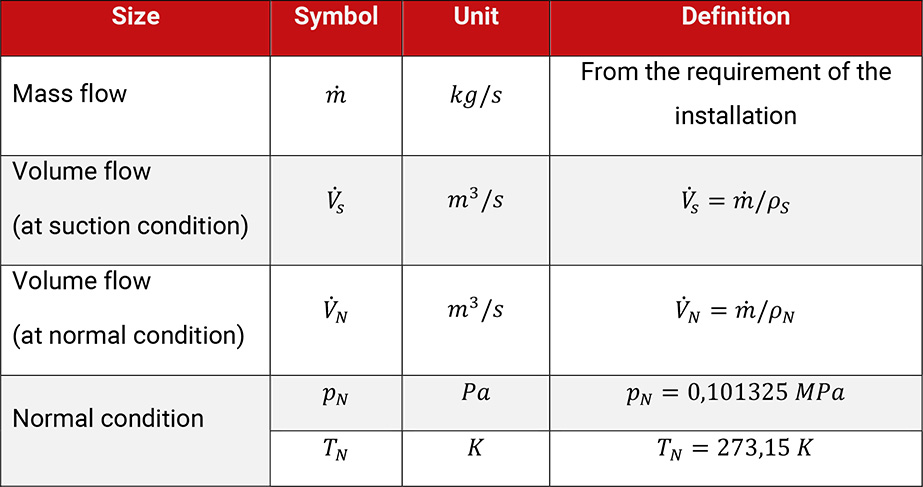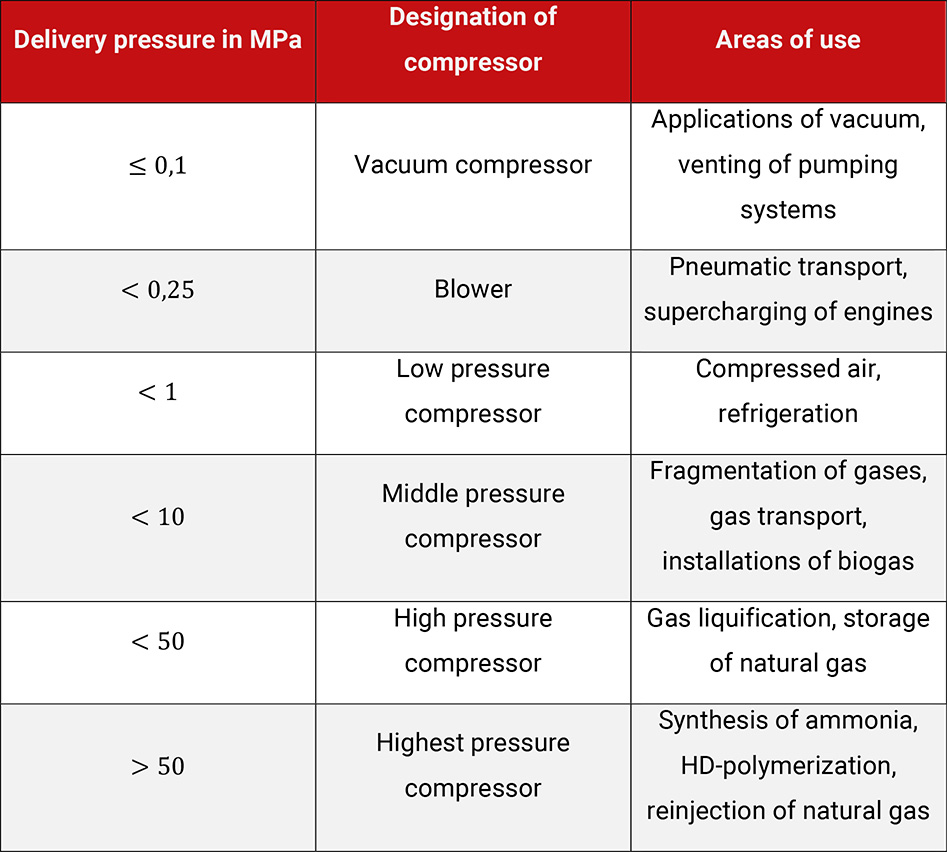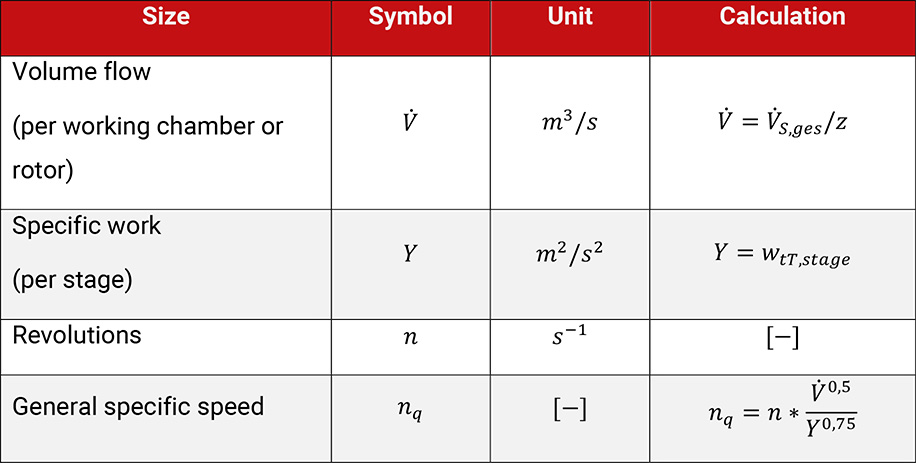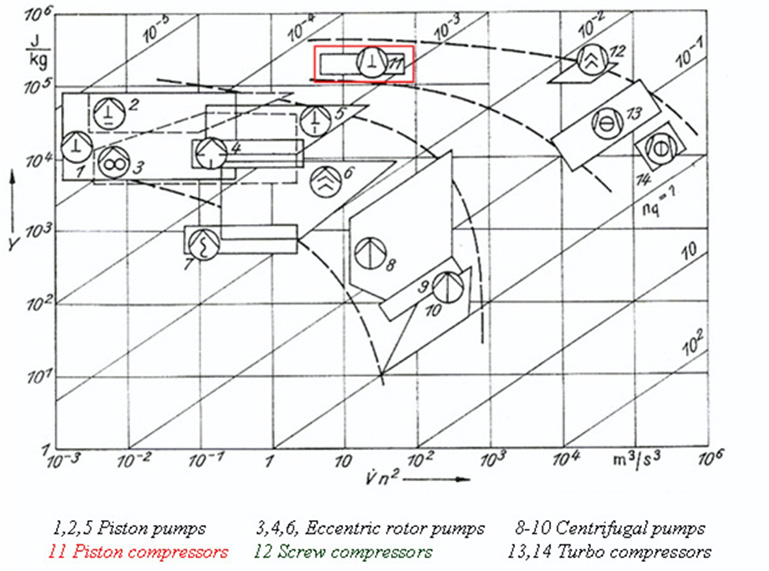Compressors are chosen or developed according to their defined pumping duty.
The physical and chemical properties of the gas to be compressed influence the design of the compressor.
Compressors pumping dangerous media (e.g. toxic, inflammable, explosive, corrosive, radioactive, damaging the ozone layer). They have to be built in such a way that there will be no external leakages (i.e. with special external seal systems or without external moving seals as hermetic compressors).
If the media to be compressed should not come into contact with oil for reasons of safety or hygiene, the compressors will have to be of the nonlubricated design (nonlubricated compressor).
From the composition of the gas, mean values of the gas constant and isentropic exponent can be derived, see Table 2.5.
Table 2.5: Calculation of the mean values of compressors
These can be taken for an approximation in the calculation of the dimensions of the compressor. For an exact calculation the thermodynamic behavior of the gas will be numerically simulated, see e.g. [11].
To quantify the throughput the mass flow could best be used, as it remains constant if external leakages are neglected. Clearer and more often the throughput is given as volume flow (at suction condition), which will determine the size of the compressor. The volume flow at normal conditions enables the comparison of mass flows for different suction conditions, see Table 2.6.
Table 2.6: Parameters to quantify the throughput of compressors
Maximum volume flows of piston compressors: related to suction conditions approx. 5000 m3h-1 – related to normal conditions approx. 10000 m3h-1 .
The changes of state to be obtained by compression of the medium is described by the condition at the inlet of the compressor (suction condition) and the required pressure at the outlet (discharge pressure).
To categorize a certain type of compressor one preferentially uses the discharge pressure, which in turn depends on its application and determines its design, see Table 2.7.
Table 2.7: Categorization of compressors depending on discharge pressure
The compression ratio of the compressor determines the number of stages J and the necessary input of work. The most suitable operating principle for a certain compression duty correlates from experience with the general specific compressor speed. This characteristic number results from the dimensionless relation of the parameters throughput, compression work and compressor speed, see Table 2.8.
Table 2.8: Necessary parameters of compressors to determine the number of stages J
The enclosed diagram shows the relationship of the operating principle and this characteristic number. For small specific compressor speeds only piston compressors are used. As one of the most important rotating piston compressors, the screw compressor is entered into the diagram. Its application area lies between the piston compressor and the turbo compressor, see Figure 2.6.
Figure 2.6: Application area of different compressors and pumps [0]






